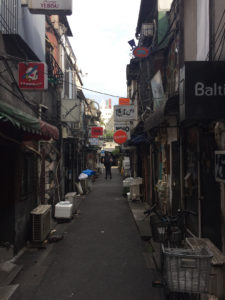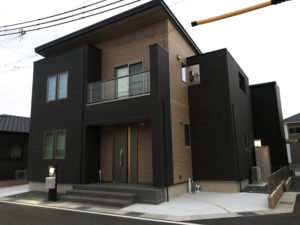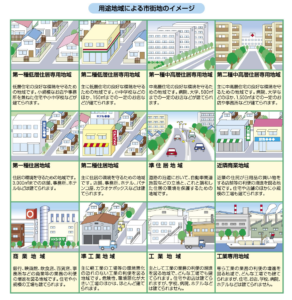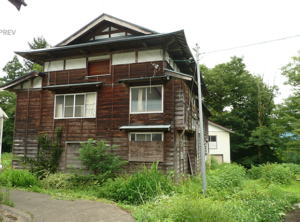The city planning law, which was created by the ministry of land, infrastructure, transport and tourism, exist to regulate urban development.
The law divides all Japan into mainly two parts; city planning area which is regulated by the city planning law and the non-city planning area which is not regulated by this law.
The law defines 12 zoning districts within urbanization promotion areas.
Of these zoning districts, three have a primary effect on real estate projects residential district, commercial districts and industrial district.
Specific regulations for each district such as allowable use, building coverage ratio and floor area ratio are defined by the building standards law.
When you buy a property in Japan, it is very important to know which district your property exists.
Because each district is highly regulated by the specifics of city planning law(and building standards law)
and such regulations always affect the neighbourhood.
The law regulates the hight, allowable use, building coverage ratio, floor area ratio, type of the business and the size of the business and so on.
For example, you can not open a restaurant in category 1 low-rise exclusive residential districts.
Twelve conventional districts (zonings) are as follows.
Seven of them are for residential districts.
(1) Category 1 low-rise exclusive residential districts are districts designated to conserve a favourable dwelling environment for low-rise housing.
(2) Category 2 low-rise exclusive residential districts are districts designated primarily to conserve a favourable dwelling environment for low-rise housing.
(3) Category 1 medium-to-high-rise exclusive residential districts are districts designated to conserve a favourable dwelling environment for medium-to-high-rise housing.
(4)Category 2 medium-to-high-rise exclusive residential districts are districts designated primarily to conserve a favourable dwelling environment for medium-to-high-rise housing.
(5)Category 1 residential districts are districts designated to conserve the dwelling environment.
(6)Category 2 residential districts are districts designated primarily to conserve the dwelling environment.
(7)Quasi-residential districts are districts designated to conserve the dwelling environment concordant with the promotion of convenience to conduct business suitable to the roadside characteristics of the region.
(8)Neighbourhood commercial districts are districts designated to promote the convenience to conduct commercial business and other businesses whose primary concern is the provision of daily necessities to residents of residential areas in the neighbourhood.
(9)Commercial districts are districts designated primarily to promote the convenience to conduct commercial business and other businesses.
(10)Quasi-industrial districts are districts designated primarily to promote convenience for industries that are not likely to degrade the environment.
(11)Industrial districts are districts designated primarily to promote convenience for industries.
(12)Exclusive industrial districts are districts designated to promote convenience for industries.
I know you can not tell the difference between them by text.
The following image would help you understand the neighbourhood better.
The law also defines some of the districts in terms of the fire protection concept.
There are two categories; fire prevention districts and quasi-fire prevention districts to control fire hazards in urban areas.
In the historical locations, you often see the ‘scenic districts’ which are designated to maintain the scenic beauty of the area.
Final Thought
I am sure your agent will explain what the district your property exists, however, you need to dig deeper.
Please ask what sort of restrictions your property have in terms of real use.
And it is very important to know where the district border is.
Even your district is nice and quiet, your next-door could be in the commercial district.
For example, you can not open a restaurant in category 1 low-rise exclusive residential districts.
I can share another example.
Let’s say your house is currently in the Category 2 residential districts and your next-door neighbour is a conventional house.
Even the current neighbour is a conventional house now if the owner changes,
your next-door neighbour could be a small hotel, a small shop, karaoke shop or even pachinko shop.
These businesses are all allowed in the said district.
You can’t predict what your next neighbour will do with their property in the future; however,
you always have to bear in mind that there is
certain risk in the future.
Other Helpful Articles
Buying a very affordable condominium in Japan ?: Do the due diligence
Essentials: How is the real estate ownership registered in Japan?
Toshihiko Yamamoto
Real estate investing consultant and author.
Founder of Yamamoto Property Advisory in Tokyo.
International property Investment consultant and licensed
real estate broker (Japan).
He serves the foreign companies and individuals to buy and sell
the real estates in Japan as well as own homes.
He holds a Bachelor’s degree in Economics from
Osaka Prefecture University in Japan
and an MBA from Bond University in Australia
Toshihiko’s book, “The Savvy Foreign Investor’s Guide to Japanese Properties: How to Expertly Buy, Manage and Sell Real Estate in Japan”is now out on Amazon, iBooks (iTunes, Apple) and Google Play.
About the book
Amazon.com Link





